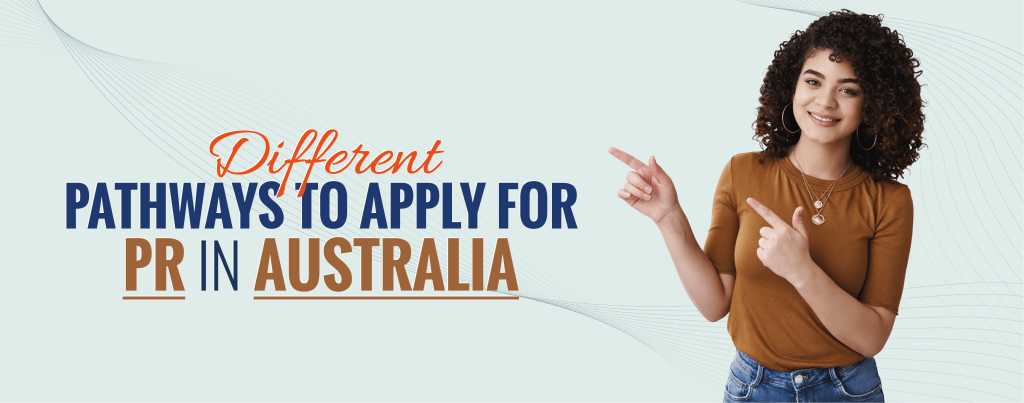Overview:
Australia is a popular destination for immigrants, offering a high standard of living, excellent education, and robust job opportunities. If you’re considering applying for Permanent Residency (PR) in Australia, there are several pathways available, each catering to different skills, qualifications, and circumstances.
If you need assistance with this profession such as EOI lodgement, skill assessment, PR application lodgement or would like to study courses related to Civil Engineering Draftsperson, we have all colleges and universities all over Australia. Contact us for more info and guidance.
Email: info@immiedu.com.au
Contact: 04 2626 3536.

Here’s an overview of the key Different Pathways to Apply for PR in Australia:
1. Skilled Migration Pathways
Skilled migration is one of the most common ways to obtain PR in Australia, designed for individuals with skills in demand in the Australian labor market. The key visas under this category include:
- Skilled Independent Visa (Subclass 189): This is a points-based visa for skilled workers who are not sponsored by an employer, a state, or a family member. It allows you to live and work anywhere in Australia.
- Skilled Nominated Visa (Subclass 190): This points-based visa requires a nomination from a state or territory government. It is ideal if your occupation is on a state’s skilled occupation list.
- Skilled Work Regional (Provisional) Visa (Subclass 491): A points-based visa for skilled workers willing to live and work in regional Australia. After living in a regional area for three years, you may be eligible for a Permanent Residence (Skilled Regional) visa (Subclass 191).
2. Employer-Sponsored Pathways
Employer-sponsored visas are another popular route to PR, particularly for those with a job offer in Australia. Key visas in this category include:
- Employer Nomination Scheme (Subclass 186): This visa requires nomination by an Australian employer and is available through the Temporary Residence Transition stream or the Direct Entry stream.
- Regional Sponsored Migration Scheme (Subclass 187): Similar to the Subclass 186, but specifically for employers in regional areas. This visa has been replaced by the Subclass 494, which offers a pathway to PR after three years.
- Temporary Skill Shortage (TSS) Visa (Subclass 482): A temporary visa that can lead to PR if the employer sponsors the applicant through the Employer Nomination Scheme (Subclass 186) or the Regional Sponsored Migration Scheme (Subclass 187).
3. Family-Sponsored Pathways
If you have close family members who are Australian citizens or PR holders, you may be eligible for family-sponsored visas. These include:
- Partner Visa (Subclass 820/801 and Subclass 309/100): This visa is for those in a genuine relationship with an Australian citizen, PR holder, or eligible New Zealand citizen. The 820/309 visa grants temporary residency, which can later lead to permanent residency through the 801/100 visa.
- Parent Visa (Subclass 103 and Subclass 143): For parents of Australian citizens or PR holders, these visas allow permanent residency. They have long waiting times, and alternative options like the Contributory Parent visa (Subclass 143) are available for a faster process but with higher fees.
- Child Visa (Subclass 101 and Subclass 802): For dependent children of Australian citizens, PR holders, or eligible New Zealand citizens.
4. Business and Investment Pathways
For those with significant business experience or investment capital, Australia offers several visa options:
- Business Innovation and Investment (Provisional) Visa (Subclass 188): This visa has several streams, including Business Innovation, Investor, and Significant Investor streams, leading to the Permanent Business Innovation and Investment Visa (Subclass 888).
- Business Talent Visa (Subclass 132): For high-caliber business owners who have a genuine commitment to owning and managing a business in Australia.
5. Global Talent Independent (GTI) Program
The GTI program is designed to attract highly skilled individuals in specific sectors, such as tech, agtech, fintech, medical technology, and more. The application process is streamlined, and successful candidates are granted PR directly through the Global Talent Visa (Subclass 858).
6. Humanitarian and Refugee Pathways
Australia offers protection to refugees and people in humanitarian need through visas like:
- Refugee Visa (Subclass 200, 201, 202, 203, 204): These visas are for individuals outside Australia who need protection due to persecution in their home country.
- Protection Visa (Subclass 866): For individuals already in Australia seeking asylum and protection.
7. Student Pathway
While studying in Australia doesn’t directly lead to PR, it can be a stepping stone. International students who complete their studies in Australia may be eligible for the Temporary Graduate Visa (Subclass 485), allowing them to gain work experience, which can later help them qualify for a skilled migration visa.
Conclusion
Navigating the pathways to PR in Australia can be complex, but understanding the options available can help you plan your journey effectively. It’s crucial to assess your eligibility, gather the necessary documents, and seek professional advice if needed to ensure a smooth application process. Whether you’re skilled in a particular profession, have family ties in Australia, or are looking to invest or start a business, there’s likely a pathway that suits your situation.
For more resources: https://www.vetassess.com.au/
If you need assistance with this profession such as EOI lodgement, skill assessment, PR application lodgement or would like to study courses related to Civil Engineering Draftsperson, we have all colleges and universities all over Australia. Contact us for more info and guidance.
Email: info@immiedu.com.au
Contact: 04 2626 3536.
